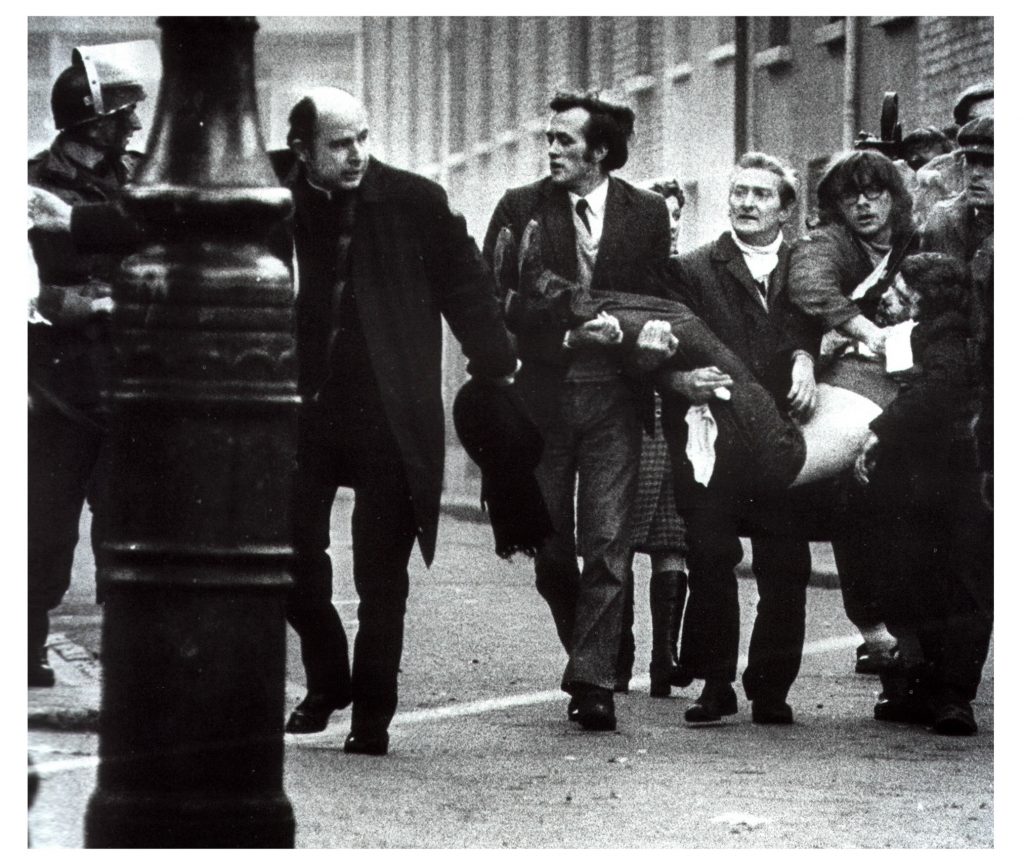Bloody Sunday and an Eyelid March 10, 2017
Author: Beach Combing | in : Contemporary , trackbackBloody Sunday was an atrocity (simply no other word) that took place in Derry, Northern Ireland, 30 Jan 1972. On that day British paratroopers opened fire on groups of protestors and killed, over several minutes, fourteen men. Who was to blame, the individual British soldiers, their officers, the politicians who had tried to put down civil unrest with highly trained killers, the IRA who had an active sniper in the area on the day, a group of rioters who attacked the soldiers and helped spark the killings? Beach happily, for the purposes of this post, can leave this matter to one side: though there is no question that British Prime Minister David Cameron was right to apologise for the British Government’s role in the killings; the only mistake there was the late date, 2010. However, Beach has become fascinated by another question, a question of memory related to the killings of that day. Who found the eyelid?
The following comes from Douglas Murray’s book: Bloody Sunday: Truth, Lies and the Saville Inquiry. Beach has not read the book, though DM is a fabulous writer, and it will certainly be worth picking up: Murray wrote a magazine piece on the same. Beach has instead quarried these paragraphs from Google Books and offers them here. It might first be worth quoting Murray on the nature of memory in relation to the events of that awful day:
In the intervening years [between 1972 and the Saville Inquiry into the killing, 1998-2004] some people embellished or invented small parts of what they did on that day. Some consciously. Some entirely unconsciously. Some must have come to the Inquiry and decided that they were not willing to backtrack on a story that they had been telling for years. Others may have told the story so often in pubs and at gatherings that the invented or elaborated memory had become a real one – as accurate a description of what was in their mind’s eye as anything that they actually saw. Still others may never have intended to mislead anyone. Some witnesses admitted that they feared their memory might have become contaminated over the years by images they saw subsequently on film or television. If the truth of what happened on Bloody Sunday was already messy over the course of decades it became far messier. Memories had amalgamated, shifted and in some cases been remade. And of course for some, who had never had any intention to mislead, the subconscious and indeed the conscience played a consoling trick.
These come after Murray gives a series of accounts relating to a mysterious eyelid.
In her Saville evidence a woman who was a married mother of four in 1972 testified that the morning after Bloody Sunday a group of children were playing by the place where McGuigan had been shot. A small boy had been picking bullets out of the nearby wall. He came to her, she said, because he had found something stuck to the wall. ‘When I looked I saw that it was part of an eyelid. It was stuck on the side, about half a yard down from the top of the seat. I realized that it must have come from somebody who had been shot and so I put it into a matchbox. Later I gave the matchbox to a priest who said that he would make sure that it was buried. I do not know the name of the priest.’
A ghastly detail, but the problem is that it was repeated again and again.
Seamus Carlin was given a matchbox (on the day of the march) with Barney McGuigan’s eyelid in.
John Patrick Friel, probably on the same day as the shooting, was shown an eyelid beneath his kitchen window.
Noel Millar, before McGuigan’s body was covered, was shown the eyelid that he put in a matchbox.
James Patrick McCafferty the day after Bloody Sunday saw an eyelid on the wall ‘there was not a tear in the eyelid; it was so perfect’. McCafferty watched while someone put the eyelid in a matchbox and put it on a civil right’s banner.
In the magazine article linked above DM writes:
Take, for instance, the gruesome detail of Barney McGuigan’s eyelid landing on a wall. At some point, once the shooting had stopped and people were milling around his body, somebody picked up the eyelid, placed it in a matchbox and put the matchbox beside the body. At the inquiry, one woman testified that her friend Jim took the eyelid down. Another said it was their friend Mickey. Another their friend Noel. Numerous witnesses said they saw the eyelid there the next day. Others said they took it down. One testified that he was given the matchbox, that he gave it to his brother who asked a priest what to do with the eyelid and was told to put it in holy ground. Another witness saw two eyelids.
Some versions are just about compatible, others are not. How can we explain this? False memories, some bizarre form of wishful thinking, pub talk (see Murray above)…? Who is to say? Beach is fascinated by one returning detail: the accounts again and again specify the height of the eyelid on the wall. The point seems to have been that the bullet carried it there while poor McGuigan was on his feet: the bullet hit him in the back of his head. The rest is urban legend physics.
McGuigan was one of the most painful deaths of that painful day. He had walked out of his house waving a white handkerchief to help a mortally wounded man and shouted repeatedly ‘don’t shoot’. He was forty one and had six children.
Beach is going false memory mad: drbeachcombing AT yahoo DOT com



